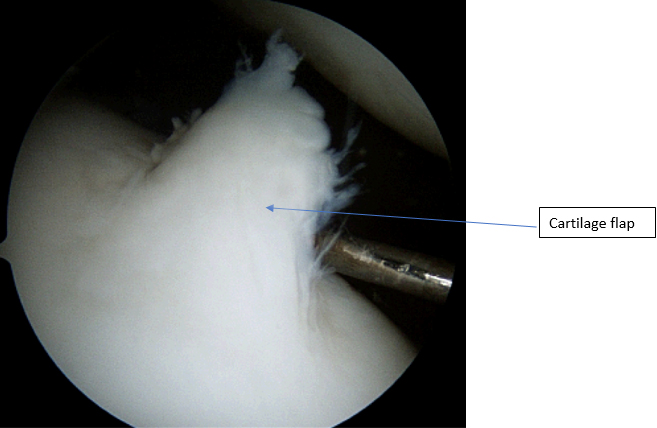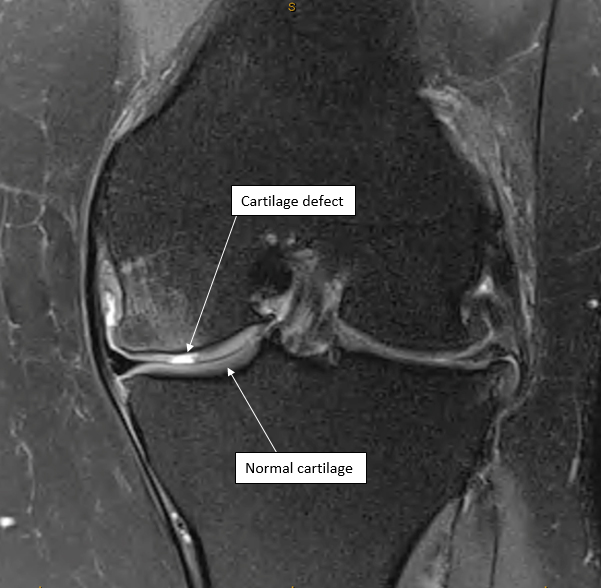Chondral injury
Occasionally this smooth cartilage surface can be damaged. This may be due to an acute traumatic injury, due to damage to the underlying bone (conditions such as Osteochondritis dissecans) or part of a degenerative process such as arthritis.
When there is damage to the cartilage the joint may not run smoothly which can cause pain and stiffness. Further to this if there is a loose flap of cartilage it can catch in the knee or jam in the knee giving sharp pain or a feeling of the knee getting stuck.
How much of a problem a chondral injury will be depends on a number of factors.
In general, it is worse to have a chondral injury when you are young, when the chondral defect is larger, and when the defect is in an area of high load (weight bearing area).

How is it treated?
Like all injuries it is worth starting with RICE - Rest, Ice, Compression and Elevation.
Most injuries can be treated initially with some anti-inflammatory medication and physiotherapy. If the knee is jamming or locking up, or is unstable these are signs that you should seek the opinion of an orthopaedic surgeon who would probably want you to get an MRI scan. The MRI scan will help show the size and position of the cartilage defect and can also show if there is a loose piece of cartilage floating around which would need to be removed.

What surgery can be done?
Depending on the details of the cartilage injury there are many options for surgical treatment.
These include:
- Arthroscopic (keyhole) removal of the loose/damaged cartilage.
- Repair/ re-attachment of the chondral piece.
- Microfracture of the damaged area.
- OATS/Mosaicplasty.
- Realignment or osteotomy.
- Joint replacement surgery.
When the cartilage damage is small or where the primary aim is to return to activity ASAP then arthroscopic removal of the loose or damaged cartilage would often be undertaken.(See arthroscopy)
When the piece of cartilage that has come loose is large and has bone attached to it this will often be reattached. This is the typical treatment for Osteochondritis dissecans.
Where there is cartilage loss only and there is a desire to regrow cartilage in the area of loss a microfracture procedure may be performed.
Where there is bone and cartilage loss and there is a desire to fill this defect, procedure such as OATS/Mosaicplasty or allograft surgery can be performed.
If the limb is mal-aligned and there is too much stress on the damaged area then it is possible to realign the limb with an osteotomy.
For severe cases with large areas of cartilage and bone loss, and particularly in older patients, joint replacement may be appropriate. This may allow immediate full weightbearing rather than a prolonged period of restrictions.

